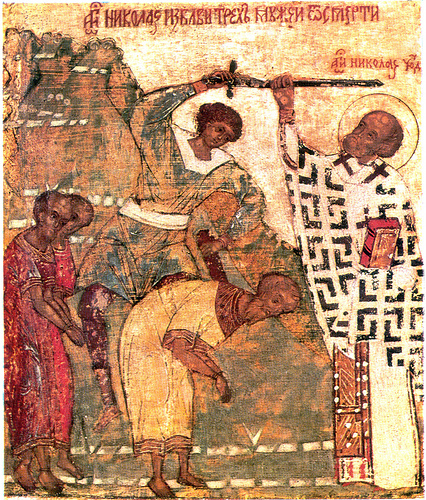Ephesians 2
 Part 1 here.
Part 1 here.
Bible commentators will tell you that Paul’s epistle to the Ephesians contains great riches. Unfortunately, without any reference to its Mosaic literary structure, it comes across as a jumble of jewels in a treasure chest. However, analysis of the structure allows us to appreciate the fine networks and chains of thought in the literary architecture — and also the clever allusions contrasting old Israel with the New. It also demonstrates Jesus’ fulfillment of the Mosaic Law.
Creation – Call to Worship (Genesis – Abraham)
Division – The Veil Removed (Exodus – Moses)
The prefigurings of the Revelation continue. The first line itself is a five-fold (Covenant) description: God (T), Lord of us (H), Jesus (E), Father (O), glory (S). Being the second stanza, the theme is Passover and the veil. Here, the veil of Abrahamic darkness is removed. It may seem strange that “revelation” corresponds to the altar, but the word is “apocalypse.” It is a revealing, like circumcision. See Steven Opp’s very helpful observations in Circumcision and Apocalypse.) And then Christ Himself is the firstfruits lamb (Revelation 5). The Lampstand gets its own five-fold Covenant shape, just as the Lord did in line 1. How beautiful is that? Incense corresponds to the Bronze Altar, but as resurrection instead of revealing. The word “immeasurable” seems to conceal the typological correspondence at Conquest. Hyperballon literally means to over throw. Revelation speaks a great deal of “overcoming,” and from memory they seem to appear around step 6 in the pattern: Joshua/Atonement.
Ascension – First Holy Fruit from the Land (Leviticus – Aaron)
Again, the first line is the entire stanza in “Covenantal” microcosm. The “mighty men” are at the centre. The allusions to Genesis 1 are beautiful, and similar to those found in Psalm 1 concerning the Blessed Man, who is Jesus. As Firstfruits, He fulfilled the Levitical Law. Now, just as Day 3 gets two lines above (Land and Fruits) for its “preliminary filling,” so Paul adds an extra cycle to express this promise (like the grape haul from the Land).
Well, that one leaves me breathless. I challenge anybody who has pooh-poohed this approach to tell me he says this is simply an imposition upon the text. I throw down the gauntlet!
Testing – Kings in the Wilderness (Numbers – Balaam)
This cycle is the centre of the second cycle. It concerns a false Pentecost, the evil spirit from the Lord that filled the rulers of the Land after they rejected the son of David. It is Israel being deceived by the Balaamites, the mutilation. The prince of the power of the air is the accuser in heaven, who would soon be thrown down, crushed under foot and bound with a chain. So this stanza follows the festal pattern, but at every step, Israel according to the flesh is a feast for the birds and beasts, adulterers under the sword of Greater Phinehas. Their eyes of darkness are a different kind of Lampstand, the Oral Law, “an angel of light.” But it was actually a veil. Israel was blinded until the bridal “fullness” of the Gentiles came in. Then the Lampstand was taken away by Rome, and old Israel was no more.
Maturity – A New Israel from the Bones (Deuteronomy – The Bride)
This time it is the last line which gets its own cycle. It’s really nice that this, being line 7, gets the future as its first line, the eighth day, at Sabbath. Our being dead in trespasses is sacrificial, yet we are alive in the holy Firstfruits presented in heaven. Grace in this second cycle appears at step 4 rather than step 5. It is in place of the Mosaic Law, the Ethics of the Covenant. Another interesting point is that, if we align this stanza with the entire book of Revelation, the enthronement of the Firstfruits Church appears at the same point as the enthronement in this cycle.
Conquest – Israel Prepared for Ministry (Joshua – The Inheritance)
For by grace you have been saved through faith.
And this is not your own doing;
it is the gift of God,
not a result of works,
so that no one may boast.
Glorification – Israel Commissioned for Ministry (Judges – The Champions)
For we are his workmanship,
created in Christ Jesus
for good works,
which God prepared beforehand,
that we should walk in them.
These stanzas correspond to the Day of Atonement and Booths. They work separately, but also as a head (Israel purified) and a body (Israel ministering to the nations). Here, the “Israel” is Jesus, by His Spirit, in the multinational Church. So although each has a Covenant shape, there is a symmetry found in the bolded words. The works on the altar of man are rejected (boasting being a form of self-exaltation, in this stanza, appearing at Ascension). The purification at the centre, in the holy of holies, is God’s work. And the good works of Jesus complete the threefold expansion of the Covenant Ethics: Man’s works, God’s Work, Jesus’ works. Beautiful.
This brings us to the end of the second cycle, but not to the end of chapter two, so it would appear that Ephesians has seven major cycles — which should not be a surprise. The literary artistry is amazing. I do keep wondering whether Paul and his scribes were aware of this (as a literary convention) or it was simply the Spirit blowing through them as His instrument. I must remember to ask him.
The picture at top is, I think, intended to contrast Israel the warrior-priest with Paul the peacemaker. But we know that Paul’s sword was more terrifying than anything wielded by old Israel’s priesthood ever. AD70 is testimony to that.

























